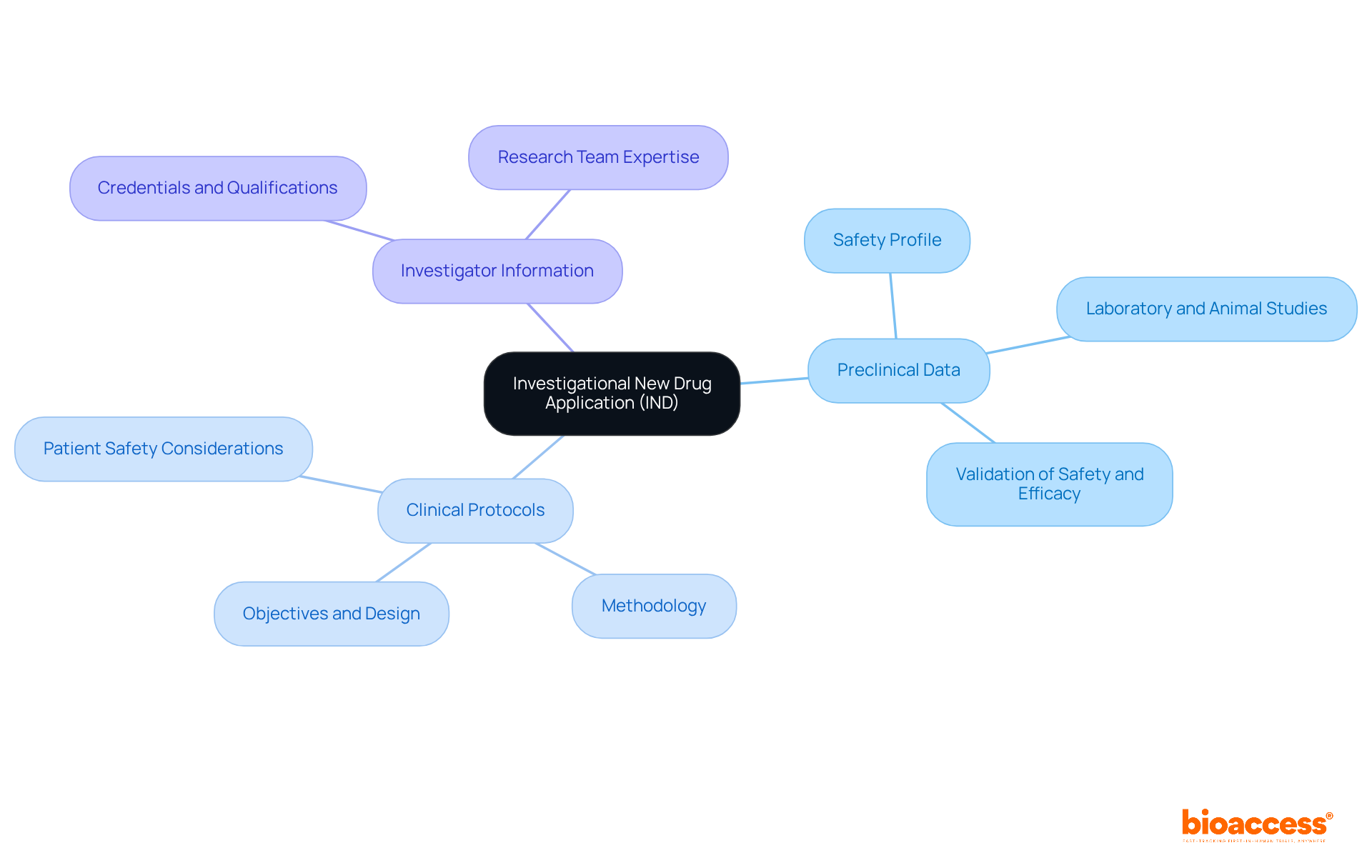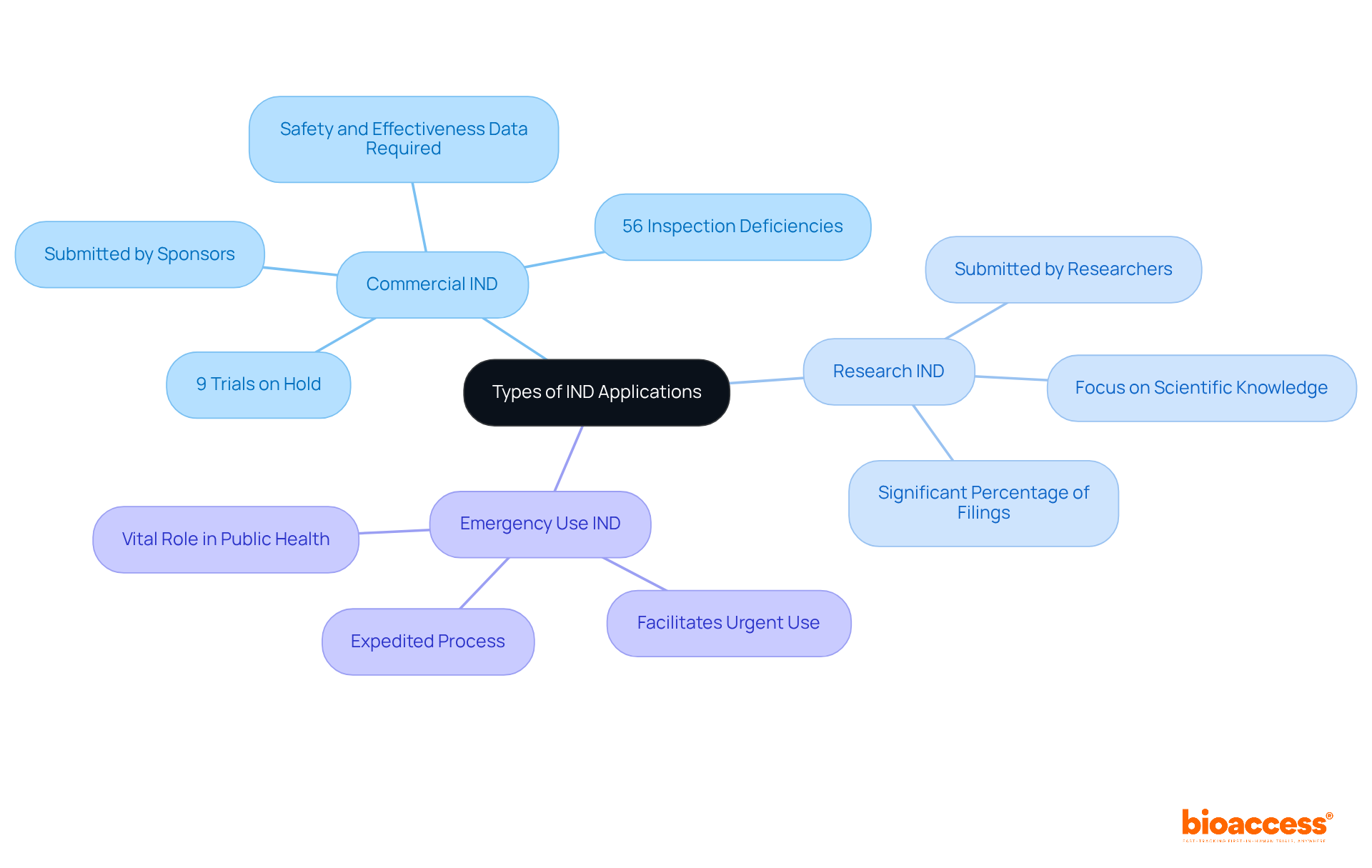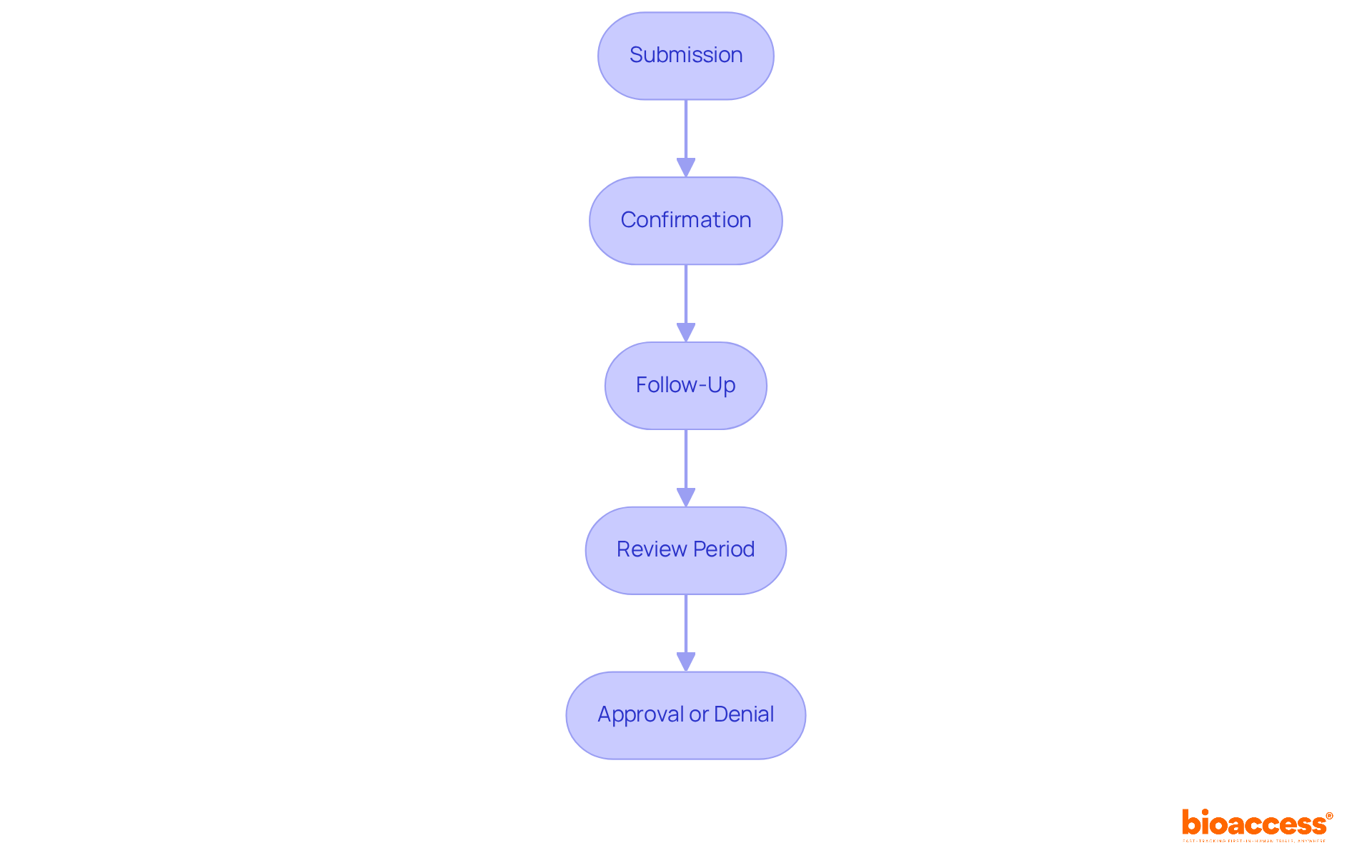


The essential steps for a successful Investigational New Drug Application (IND) encompass:
This article underscores that a comprehensive preparation of:
Coupled with proactive follow-up, significantly enhances the likelihood of approval and accelerates the initiation of clinical trials.
Navigating the complex landscape of drug development demands a profound understanding of the Investigational New Drug Application (IND) process. This process serves as a critical gateway for pharmaceutical companies and research institutions aiming to conduct clinical trials. This article explores the essential steps for successfully preparing and submitting an IND, emphasizing the necessity of meticulous documentation and strategic communication with the FDA. Given the high stakes and variable approval rates, organizations must consider:
The Investigational New Drug Application (IND) serves as an official request to the FDA, enabling pharmaceutical companies and research institutions to initiate clinical trials involving investigational new drugs. This program is indispensable for any organization aiming to conduct human trials and must encompass comprehensive details regarding the substance, including its chemical composition, production methods, and preclinical study results that validate its safety and efficacy. Understanding the investigational new drug process is vital, as it necessitates familiarity with regulatory requirements, essential data types, and the overall approval timeline.
Key components of the IND include:
In 2025, the FDA is projected to receive approximately 1,500 submissions for investigational new drugs, with only about 9% encountering clinical holds that could delay development. Regulatory experts assert that effective communication with the FDA throughout the investigational new drug submission process can significantly enhance the likelihood of a favorable outcome. By mastering these elements, stakeholders can navigate the complexities of the IND submission process more effectively, thereby bolstering their chances of success in clinical trials.

Understanding the various categories of IND submissions is essential for selecting the appropriate pathway in the medicinal development process. Each type serves a specific purpose:
Commercial IND: This application is submitted by sponsors who aim to market the drug upon approval. It necessitates comprehensive data demonstrating the substance's safety and effectiveness, along with detailed manufacturing information. Notably, approximately 56% of multi-cycle submissions encounter inspection deficiencies, highlighting the complexities inherent in this category. Furthermore, around 9% of IND submissions face holds for trials, which can significantly impede the development timeline.
Research IND (Investigator IND): Typically submitted by individual researchers or academic institutions, this type focuses on investigating either an unapproved medication or an approved substance for a new indication. The primary objective here is to enhance scientific knowledge rather than immediate commercial interests. A significant percentage of IND filings are for research purposes, reflecting a strong commitment to scientific advancement.
Emergency Use IND: This request facilitates the use of experimental medications in urgent situations where no alternative therapies are available. The process is expedited to ensure immediate access to potentially life-saving treatments, underscoring its vital role in public health emergencies.
Selecting the appropriate IND type not only streamlines the submission process but also ensures compliance with FDA regulations, thereby facilitating a smoother transition to clinical trials. The FDA typically reviews IND submissions within 30 days after submission, making it imperative to choose the correct IND type to prevent potential delays. As Kent Amsberry, Director of CMC at Cardinal Health Regulatory Sciences, notes, understanding the nuances of IND types is crucial for navigating the complexities of pharmaceutical development.

To successfully submit an IND request, several key documents must be meticulously prepared and included. These documents supply the FDA with essential information to assess the safety and efficacy of the investigational treatment. Essential documentation includes:
The average time taken to prepare IND documentation can range from several months to over a year, depending on the complexity of the drug and the thoroughness of the preparation. By meticulously preparing these documents, researchers can enhance the likelihood of a successful IND submission and expedite the review process.

Submitting the investigational new drug request is a crucial step in advancing clinical research. This process encompasses several key actions that researchers must undertake to ensure success:
By effectively managing the submission and follow-up process, researchers can navigate the complexities of the IND application, ensuring compliance and expediting the initiation of their clinical trials.

The Investigational New Drug Application (IND) serves as a critical gateway for pharmaceutical companies and research institutions seeking to conduct clinical trials with new drugs. Mastering the intricacies of the IND process—from understanding its components to preparing the necessary documentation and maintaining effective communication with the FDA—is essential for successful drug development. This comprehensive approach not only enhances the chances of approval but also significantly contributes to advancing medical science.
Key insights from the article underscore the importance of:
Each component plays a vital role in ensuring that applications are thorough and meet regulatory standards. Moreover, meticulous preparation of required documents, such as the IND application form, clinical study protocol, and preclinical study reports, is paramount for a smooth submission process.
Ultimately, the IND application transcends being merely a regulatory hurdle; it is a crucial step toward bringing innovative treatments to patients. By understanding the IND process and its requirements, stakeholders can navigate the complexities of drug development more effectively. The pursuit of medical advancements hinges on effective IND submissions that prioritize safety, efficacy, and compliance, reinforcing the significance of this process in the broader landscape of healthcare innovation.
What is the purpose of the Investigational New Drug Application (IND)?
The IND serves as an official request to the FDA, allowing pharmaceutical companies and research institutions to initiate clinical trials involving investigational new drugs.
What key information must be included in an IND?
An IND must include comprehensive details about the substance, such as its chemical composition, production methods, and preclinical study results that validate its safety and efficacy.
Why is understanding the IND process important?
Understanding the IND process is vital for familiarity with regulatory requirements, essential data types, and the overall approval timeline necessary for conducting human trials.
What are the key components of an IND?
The key components of an IND include preclinical data, clinical protocols, and investigator information.
What is the significance of preclinical data in the IND?
Preclinical data consists of comprehensive results from laboratory and animal studies that assess the drug's safety profile, laying the groundwork for demonstrating that the investigational product is reasonably safe for initial human use.
What are clinical protocols in the context of an IND?
Clinical protocols are detailed plans that outline the objectives, design, and methodology of the clinical trials, essential for ensuring robust study design and patient safety.
Why is investigator information important in the IND submission?
Investigator information provides the credentials and qualifications of the research team, establishing the expertise necessary to conduct the trials.
How many IND submissions does the FDA expect to receive in 2025, and what is the expected rate of clinical holds?
The FDA is projected to receive approximately 1,500 submissions for investigational new drugs in 2025, with about 9% potentially encountering clinical holds that could delay development.
How can effective communication with the FDA impact the IND submission process?
Effective communication with the FDA throughout the IND submission process can significantly enhance the likelihood of a favorable outcome for the application.